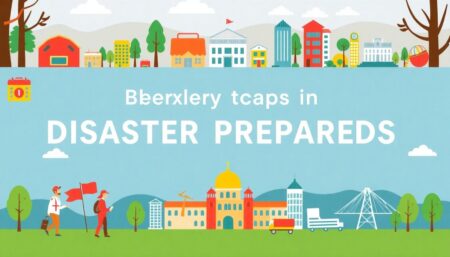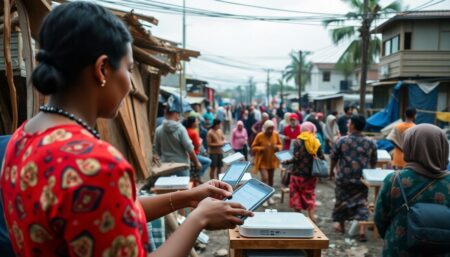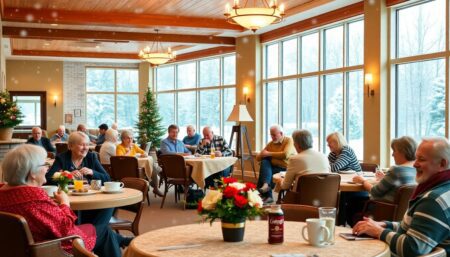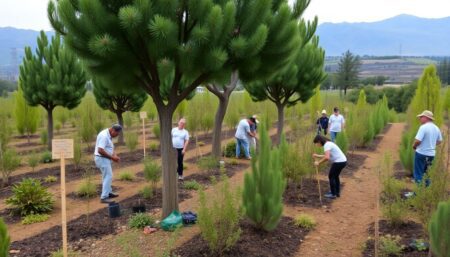In the ever-evolving landscape of preparedness and self-reliance, one truth remains constant: strength lies in numbers. As a prepper, you’ve likely invested time and resources into stockpiling supplies, honing skills, and fortifying your home. But have you considered the power of community? This is where the ultimate guide to building a prepper network comes in, transforming your individual preparedness into a collective force to be reckoned with. Let’s dive in and explore the world of survival community building and mutual aid groups.
First, let’s address the elephant in the room. Why is building a prepper network so crucial? According to a 2021 survey by the American Preppers Network, 87% of preppers believe that having a community of like-minded individuals is essential for long-term survival. This statistic underscores the importance of fostering connections that can provide support, share resources, and even save lives in times of crisis.
Now, you might be thinking, ‘I’m already prepared. Why do I need a network?’ While it’s true that individual preparedness is the foundation of any survival strategy, a prepper network can amplify your efforts exponentially. Imagine having access to a diverse skill set, a larger pool of resources, and the collective wisdom of experienced preppers. This is the power of a well-built prepper network.
But here’s the thing: building a prepper network isn’t as simple as posting a ‘Join my prepper group’ sign on your front lawn. It requires strategic planning, careful vetting, and a commitment to fostering a supportive community. That’s where this guide comes in. We promise to walk you through every step of the process, from identifying potential members to establishing a robust mutual aid system.
In the following sections, we’ll delve into the art of survival community building, exploring topics such as the importance of shared values, the role of communication, and the benefits of diversity. We’ll also provide practical tips on how to find, engage, and integrate potential members into your network. By the end of this guide, you’ll have a clear roadmap for creating a prepper network that’s not just strong, but resilient, adaptable, and ready to face any challenge together.
So, are you ready to take your preparedness to the next level? Let’s roll up our sleeves, put on our community builder hats, and get started on creating the ultimate prepper network. After all, in a world that’s constantly changing, there’s strength in numbers, and together, we can weather any storm.
Forge a Survival Community: Mutual Aid Groups for Preppers
In the realm of preparedness, where the focus is often on individual stockpiles and skills, there’s a growing recognition of the power of community. This is where mutual aid groups, or ‘prepper communities,’ come into play. These groups are not just about sharing resources like food, water, and medical supplies; they’re about fostering a sense of collective responsibility and resilience. Imagine a neighborhood where everyone knows how to grow food, repair tools, and provide first aid. Where families can rely on each other for support, turning a potential crisis into a shared challenge. It’s about more than survival; it’s about building a network of trust, knowledge, and camaraderie. It’s about creating a community that’s not just ready for whatever comes its way, but one that’s stronger because of it. So, let’s forge these survival communities, one neighbor helping another, turning ‘I’ into ‘we,’ and creating a web of mutual aid that’s as robust as it is heartwarming.

Understanding the Importance of a Prepper Network
In the realm of preparedness, the concept of a prepper network often takes center stage, offering a collective approach that transcends individualistic efforts. A prepper network, at its core, is a community of like-minded individuals who come together to share resources, knowledge, and skills, with the common goal of enhancing their overall preparedness and resilience.
The significance of a prepper network lies in its ability to amplify individual efforts, creating a synergy that is greater than the sum of its parts. While individual preparedness is crucial, it can often be limited by resources, knowledge, or physical capability. A prepper network addresses these limitations by providing a support system that can help overcome these barriers.
One of the most compelling benefits of a prepper network is the wealth of knowledge and skills it brings together. From medical expertise to engineering prowess, from gardening skills to survival techniques, a diverse network can offer a vast array of knowledge that can be invaluable in times of crisis. This collective wisdom can be shared through workshops, training sessions, or simply through casual conversations, ensuring that everyone in the network benefits from the expertise of others.
Moreover, a prepper network offers practical advantages that individual preparedness may not. For instance, it provides a sense of security and safety in numbers. In a crisis situation, a group can deter potential threats more effectively than an individual. Additionally, a prepper network can facilitate the sharing of resources, from food and water to tools and shelter, ensuring that everyone in the network has access to what they need.
But the advantages of a prepper network extend beyond the practical. It offers psychological benefits that can be invaluable in times of stress and uncertainty. Being part of a community can provide a sense of belonging, reducing feelings of isolation and anxiety. It can offer emotional support, with members providing comfort and encouragement to each other. Furthermore, it can provide a sense of purpose and control, with members working together to improve their situation and protect their community.
However, it’s important to note that a prepper network differs from individualistic preparedness in several ways. While individual preparedness focuses on personal efforts and resources, a prepper network requires cooperation and collaboration. It requires members to trust each other, to communicate openly, and to work together towards common goals. It requires a sense of community and a willingness to put the needs of the group above individual needs.
In essence, a prepper network is not just about being prepared, it’s about being prepared together. It’s about recognizing that our strength lies not in our individual efforts, but in our collective power. It’s about understanding that in a world filled with uncertainty, we are stronger and more resilient when we stand together.

Identifying Your Community: Like Minds Attract
Finding your tribe, those like-minded individuals who share your passions and values, can be a rewarding journey. It’s like finding pieces of a puzzle that complete your picture. Let’s explore some ways to identify these kindred spirits in your area.
First, let’s delve into the digital world. Online platforms have made it easier than ever to connect with people who share your interests. Websites like Meetup.com, Facebook Groups, and Reddit host communities centered around various hobbies, causes, and professions. To find these, simply search for keywords related to your interests. For instance, if you’re into hiking, search for ‘hiking groups’ in your area. Remember, the more specific your interest, the more likely you are to find a niche community.
Once you’ve found a few groups that pique your interest, it’s time to evaluate if they’re the right fit for you. Here are some steps to help you:
- Check the Group’s Description: This usually gives a good overview of what the group is about and what they stand for.
- Look at Recent Posts: This can give you a sense of the group’s dynamics and whether the conversations align with your interests and values.
- Join and Observe: Before jumping in with both feet, join the group and observe the conversations for a while. This can help you understand the group’s culture and whether it’s a good fit for you.
Next, let’s not forget about local meetups. These can be a great way to connect with people in your area face-to-face. Check local community centers, libraries, and schools for events and classes that align with your interests. Also, don’t hesitate to ask around. Sometimes, the best way to find a group is through word-of-mouth.
When evaluating potential members for your network, whether online or offline, consider the following:
- Shared Interests: This is a given, but it’s important. You want to connect with people who are passionate about the same things you are.
- Values Alignment: While you don’t have to agree on everything, it’s important to share some core values. This can help ensure a positive and productive relationship.
- Growth Potential: Consider how this person can help you grow, and vice versa. A good network should be mutually beneficial.
Remember, finding your community is a journey. It’s okay to try out different groups and events before you find the ones that truly resonate with you. Be patient, be open, and most importantly, be yourself. Happy connecting!

Establishing Your Network’s Core Values and Goals
Establishing a clear mission and core values is the cornerstone of building a resilient and cohesive prepper network. A well-defined mission serves as a guiding light, ensuring that everyone in the network understands the purpose and direction of your collective efforts. It provides a shared vision, fostering unity and purpose among members, and helps to attract like-minded individuals who can contribute to your network’s growth and success.
To create a compelling mission statement, consider the following steps:
- Identify your network’s purpose: What is the primary reason for your network’s existence? Is it to ensure community survival in case of disasters, to promote self-sufficiency, or to prepare for long-term sustainability?
- Define your target audience: Who are the people you aim to serve or support? Are they your local community, a specific demographic, or a broader network of preppers?
- Outline your network’s scope: What are the boundaries of your network’s influence and activities? Are you focused on local initiatives, or do you aim to connect with other networks on a regional or national level?
- Craft a concise and inspiring statement: Combine the above elements into a clear, concise, and inspiring mission statement that encapsulates your network’s purpose and vision. Make sure it is easy to understand and remember.
Once you have established your mission, it’s crucial to define your network’s core values. These values serve as the foundation of your network’s culture and guide decision-making processes. They help to create a sense of belonging and ensure that everyone is working towards the same ideals.
To create a set of core values, consider the following tips:
- Brainstorm values: Gather a group of trusted members and brainstorm a list of values that resonate with your network’s mission and purpose. These could include values such as self-reliance, community support, sustainability, or adaptability.
- Prioritize values: Once you have a list of potential values, prioritize them based on their relevance to your mission and their importance to your network’s success.
- Craft value statements: For each core value, create a concise and memorable statement that encapsulates its meaning and significance to your network.
- Communicate and reinforce values: Regularly communicate your network’s core values to new and existing members. Reinforce these values through your network’s activities, decision-making processes, and member interactions.
By establishing a clear mission and set of core values, you create a strong foundation for your prepper network. This shared vision ensures that everyone is working towards the same goals, fostering unity, and promoting the long-term success of your network.

Developing Your Network’s Structure and Organization
Developing Your Network’s Structure and Organization
When it comes to organizing prepper networks, the structure you choose can significantly impact your group’s efficiency, communication, and overall success. Two primary organizational structures dominate the prepper community: flat hierarchies and traditional leadership models. Each approach has its unique advantages and challenges.
Flat hierarchies, also known as horizontal or peer-to-peer networks, are characterized by a lack of formal leadership roles. Instead, decision-making power is distributed evenly among all members. This structure encourages open communication, fosters a sense of community, and promotes collective problem-solving. In a flat hierarchy, everyone’s voice is heard, and consensus is valued. This can lead to innovative ideas and a strong sense of camaraderie. However, flat hierarchies can also suffer from decision paralysis, as consensus can be time-consuming to achieve. Additionally, without clear leadership, tasks may not get delegated effectively, leading to inefficiencies.
On the other hand, traditional leadership models, such as a pyramid or chain-of-command structure, establish clear roles and responsibilities. A leader or small leadership team makes decisions, sets goals, and delegates tasks. This structure can facilitate quick decision-making and efficient task delegation. It’s particularly useful in high-stakes situations where time is of the essence. However, traditional leadership models can stifle creativity and innovation, as decision-making power is concentrated at the top. They can also lead to power struggles and resentment if not managed carefully.
To leverage the strengths of both approaches, some prepper networks adopt a hybrid model. This might involve a small leadership team for strategic decision-making and task delegation, while also encouraging open communication and collective problem-solving among all members. This hybrid approach can combine the efficiency of a traditional leadership model with the innovation and community spirit of a flat hierarchy.
Ultimately, the best organizational structure for your prepper network will depend on your group’s size, goals, and the specific challenges you face. It’s essential to consider your network’s needs and adapt your structure accordingly. Regularly reviewing and adjusting your organizational structure will help ensure your network remains effective and resilient.

Fostering a Culture of Mutual Aid and Skill-Sharing
In the realm of preparedness communities, the concept of mutual aid emerges as a beacon of cooperation and resilience. Mutual aid, at its core, is a voluntary reciprocal exchange of resources and services for mutual benefit. It’s not just about stockpiling supplies; it’s about building a network of trust, knowledge, and support. In prepper networks, this translates into a culture where members actively share skills, resources, and expertise to enhance everyone’s preparedness and self-sufficiency.
Imagine a prepper network where members collectively possess a vast array of skills
- from gardening and first aid to engineering and wilderness survival. By fostering a culture of mutual aid and skill-sharing, these skills become a communal asset. For instance, a member skilled in beekeeping might offer honey and wax products in exchange for help in building a greenhouse from a member with construction expertise. A first aid instructor could provide training to the group in exchange for assistance in setting up a small-scale hydroponic system.
To facilitate this exchange, prepper networks can establish platforms for skill-sharing. This could be a physical space like a community center or an online forum. Regular skill-sharing events, workshops, and potlucks can also be organized. Here’s a simple way to structure these events:
- Skill Fair: Members sign up to teach a skill they possess, and others sign up to learn. Each session is a mini-workshop where the teacher shares their knowledge and the learner gains a new skill.
- Barter Market: A marketplace where members can exchange goods and services. This could be a physical market or an online platform where members post what they have to offer and what they’re looking for.
- Mentorship Program: Pairing up members with complementary skills for a period of time. The mentor shares their knowledge, and the mentee provides assistance in areas where the mentor may need help.
By fostering a culture of mutual aid and skill-sharing, prepper networks not only enhance individual preparedness but also create a strong, resilient community that can face challenges together.
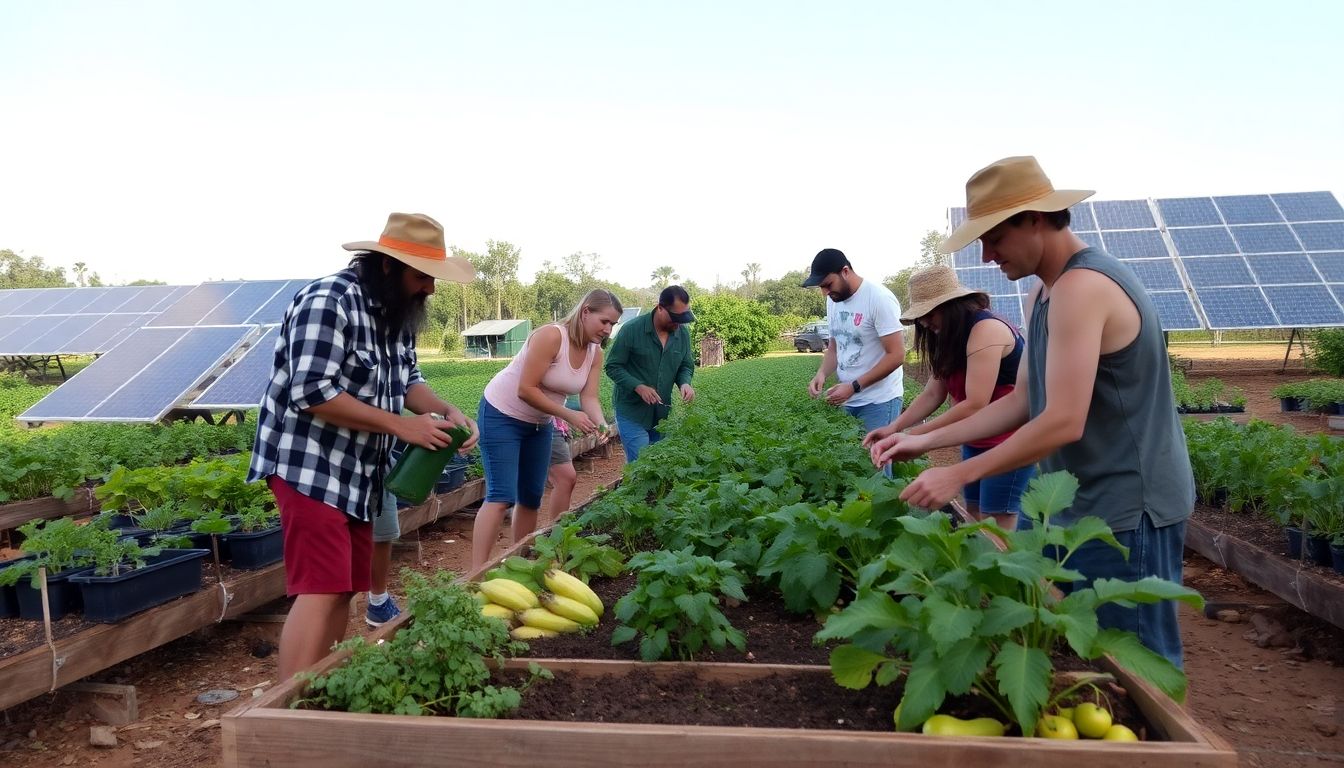
Building a Sustainable Resource Network
In the pursuit of a resilient and sustainable future, building a robust resource network within your prepper community is not just an advantage, but a necessity. The journey towards self-sufficiency begins with the understanding that our resources are finite, and our reliance on external systems can be fragile. By fostering a sustainable resource network, we create a safety net that ensures our community’s survival and well-being, even in the face of unexpected challenges.
The cornerstone of this network is self-sufficiency. This doesn’t mean each individual must be an expert in every skill, but rather that the community as a whole possesses a diverse range of abilities that can meet its needs. From growing food and building shelters to healing injuries and teaching children, these skills form the backbone of our community’s resilience.
Barter systems are another vital component of a sustainable resource network. Money, as we know it, may not always be a reliable medium of exchange, especially in times of crisis. Bartering allows us to exchange goods and services directly, fostering a sense of community and interdependence. It encourages us to value the skills and products of our neighbors, promoting a culture of sharing and cooperation.
Community-supported projects are the lifeblood of our network. These are initiatives that benefit the entire community, such as communal gardens, renewable energy projects, or collective water management systems. By working together on these projects, we not only create sustainable resources but also strengthen our bonds as a community. These projects also serve as learning opportunities, allowing us to share knowledge and skills with one another.
To build a sustainable resource network, consider the following steps:
- Assess the skills and resources available within your community.
- Identify gaps in these skills and resources, and plan how to fill them.
- Establish a barter system that is fair, transparent, and easy to use.
- Identify community-supported projects that will benefit everyone.
- Regularly review and update your network to ensure it remains relevant and effective.
Remember, the goal is not to create a perfect, self-sufficient community overnight, but to build a resilient network that can adapt and grow over time. By working together and valuing the contributions of each member, we can create a sustainable future for our community.

Preparing for Emergencies: Network Drills and Exercises
Preparing for emergencies is not just about stockpiling supplies, but also about fostering a resilient community that can respond effectively when disaster strikes. This is where regular drills and exercises come into play, serving as the lifeblood of a well-prepared prepper network.
Imagine your prepper network as a well-oiled machine. Drills and exercises are the lubricant that keeps this machine running smoothly, ensuring that every component knows its role and how to interact with others in a crisis. They help identify gaps in your preparedness plan, build teamwork, and instill confidence in your group’s ability to handle emergencies.
Planning and executing effective drills involves several steps. First, identify the scenarios you want to practice. These could range from natural disasters like earthquakes or hurricanes to man-made crises such as power outages or chemical spills. Next, set clear objectives for your drill. What do you hope to achieve? Is it testing communication protocols, practicing evacuation routes, or simulating first aid situations?
Once you’ve decided on the scenario and objectives, it’s time to involve your network. Assign roles and responsibilities, and ensure everyone understands their part. It’s also crucial to involve local emergency services if the scenario allows. They can provide valuable insights and help integrate your network’s response with official emergency services.
During the drill, observe and document everything. Note what works well and what doesn’t. After the drill, debrief with your network. Discuss what went right, what went wrong, and why. This is where you learn from your drill, and where improvements can be made. Remember, the goal is not to pass or fail a drill, but to learn and grow as a network.
Finally, don’t forget to make drills fun and engaging. Incorporate games, challenges, and rewards to keep everyone motivated and involved. After all, a prepper network that enjoys preparing together is a prepper network that will stick together when emergencies arise.
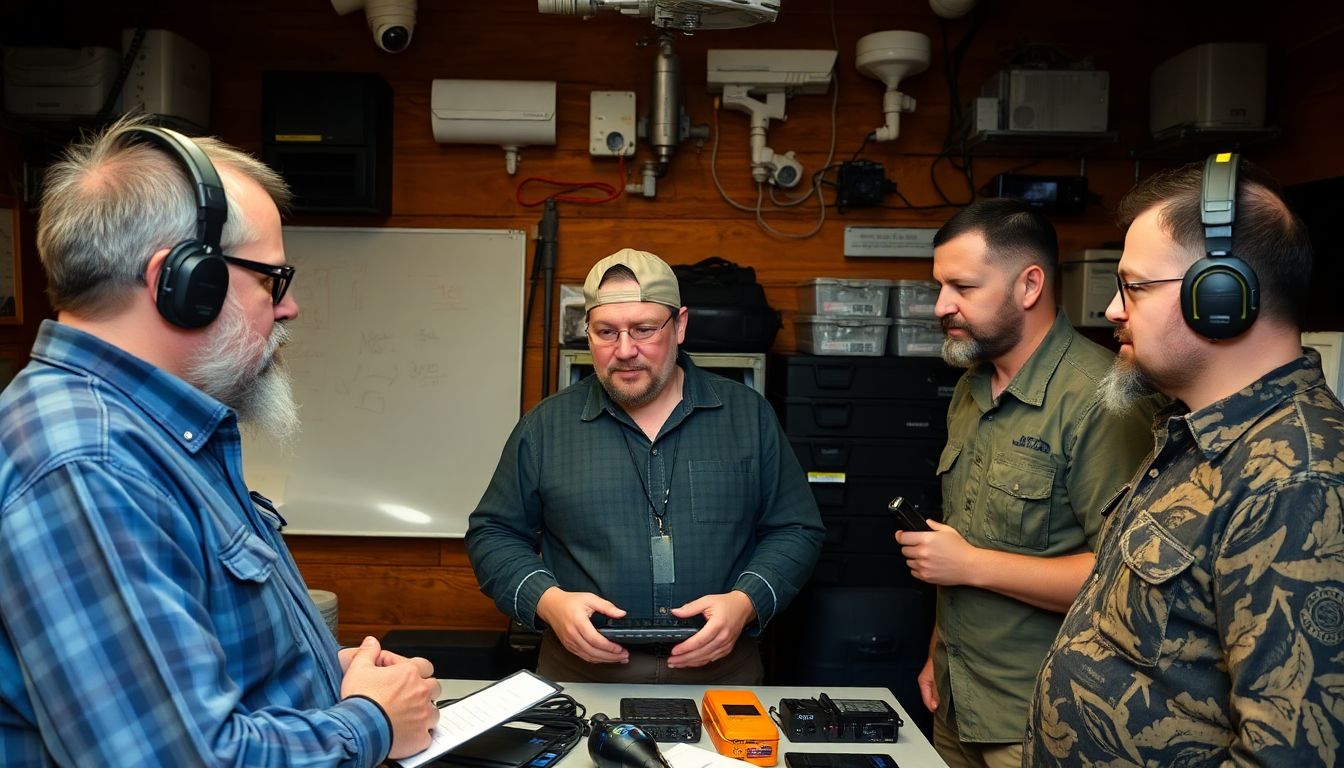
Maintaining Security and OpSec in Your Prepper Network
In the realm of prepping, where self-reliance and community resilience are paramount, maintaining robust operational security (OpSec) is not just an advantage, but a necessity. OpSec, in essence, is about protecting sensitive information from falling into the wrong hands, ensuring the safety and security of your prepper network. It’s the art of keeping your plans, supplies, and community intact, even in the face of potential threats.
Firstly, let’s understand why OpSec is so crucial. In a crisis situation, information is power. The more you know about what’s happening and what others are doing, the better you can prepare and respond. However, this power can be misused. Unscrupulous individuals or groups could exploit your information to target your community, steal your supplies, or even cause harm. Therefore, maintaining privacy and sharing information securely is not just about protecting your own interests, but also about safeguarding your community.
Now, let’s delve into some practical tips to maintain OpSec in your prepper network.
- Vet New Members Carefully
- Before allowing new members into your network, ensure they are who they claim to be and have the right intentions. Background checks, references, and face-to-face meetings can help in this process.
- Use Encrypted Communication Channels
- When discussing sensitive information, use encrypted messaging apps or platforms. These tools ensure that only the intended recipients can read your messages.
- Avoid Using Real Names and Locations
- Use code names or handles for yourself and your community. Avoid discussing specific locations or details that could lead to your community’s physical location.
- Limit Information Sharing
- Only share information that is necessary and relevant. The less information you share, the less there is to potentially compromise.
- Educate Your Community
- OpSec is a collective responsibility. Ensure all members understand its importance and how to practice it. Regular training and reminders can help reinforce good habits.
Remember, maintaining OpSec is an ongoing process. It’s not about being paranoid, but being proactive. It’s about creating a safe space where your community can prepare, plan, and respond to threats, without becoming a threat itself.

Growing and Expanding Your Prepper Network
Growing and expanding your prepper network is a journey that requires patience, strategy, and a genuine desire to connect with like-minded individuals. It’s not just about numbers, but about fostering a community of trust, knowledge, and mutual support. Here’s a roadmap to help you navigate this process:
Attracting New Members:
Share Your Story:
- People connect with authenticity. Share your journey, your motivations, and your experiences. This helps others understand your values and builds trust.
Offer Value:
- What unique skills, knowledge, or resources can you offer? This could be anything from first aid training to a surplus of canned goods. Make it clear what new members can gain by joining your network.
Be Approachable:
Create an environment where people feel comfortable asking questions and sharing their own experiences. A welcoming attitude goes a long way in attracting new members.
Forming Alliances with Other Groups:
Identify Complementary Groups:
- Look for groups that have skills or resources you lack. This could be anything from medical professionals to farmers or tech-savvy individuals.
Reach Out:
- Don’t be afraid to initiate contact. Clearly communicate your intentions and how a partnership could benefit both groups.
Collaborate:
Once you’ve established a connection, look for opportunities to collaborate. This could be joint training exercises, resource sharing, or combined projects.
Maintaining a Positive Reputation:
Follow Through:
- If you say you’re going to do something, do it. Reliability builds trust and respect.
Be Respectful:
- Treat everyone with kindness and respect, regardless of their skills or contributions. A positive attitude is contagious.
Communicate Openly:
Keep your network informed about decisions, changes, and plans. Open communication fosters a sense of community and shared purpose.
Remember, growing your prepper network isn’t a race. It’s about building a community that can support and sustain itself over the long term. Be patient, be genuine, and most importantly, be yourself. The right people will find you and want to be a part of your network.
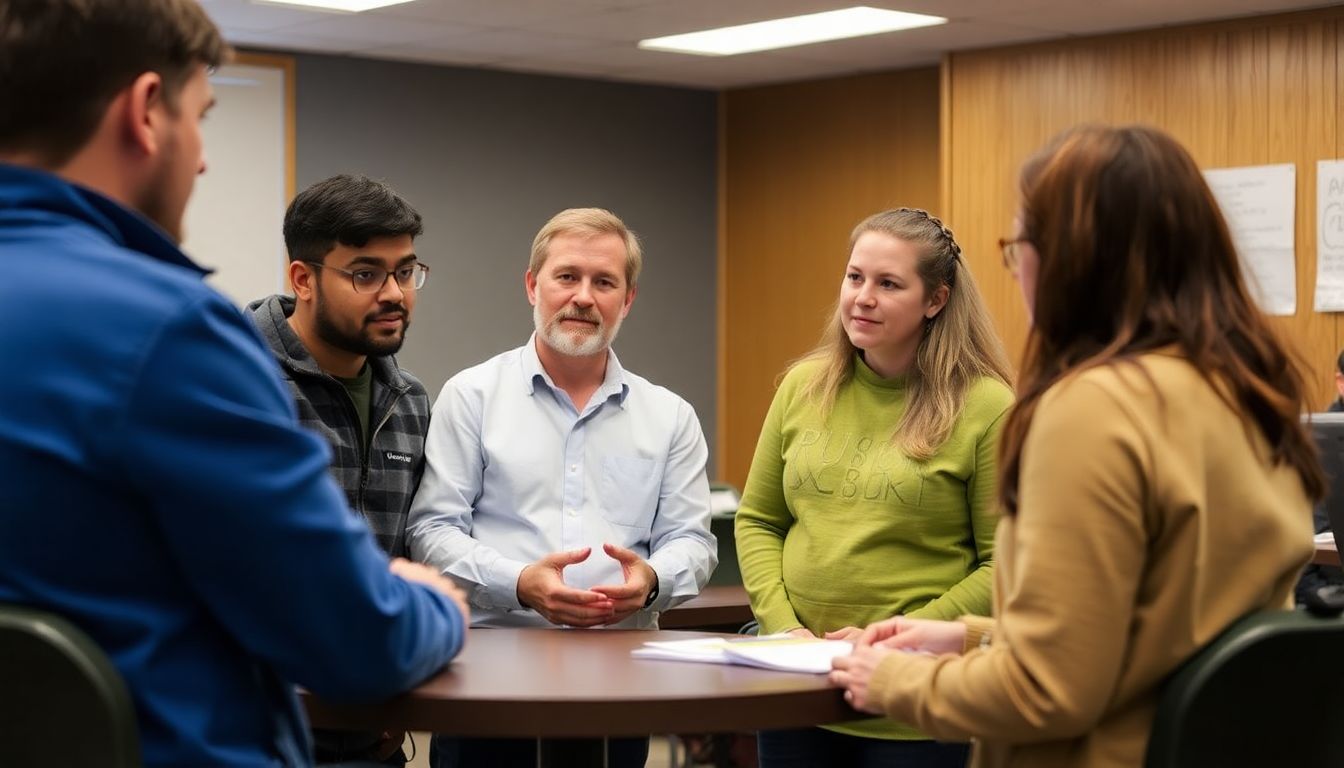
Navigating Challenges and Conflicts Within Your Network
Navigating Challenges and Conflicts Within Your Network
Prepping networks, communities of individuals who prepare for potential disasters or emergencies, are invaluable for sharing resources, knowledge, and support. However, like any close-knit group, they’re not immune to challenges and conflicts. These can range from disagreements over strategies and resource allocation to personality clashes and trust issues. The key to maintaining a strong, functional network lies in addressing these issues head-on with open communication and effective conflict resolution.
Open communication is the cornerstone of any healthy relationship, and it’s no different in prepper networks. Encourage everyone to express their thoughts, concerns, and ideas freely and respectfully. This fosters an environment of understanding and mutual respect, making it easier to navigate challenges together. Regular meetings or check-ins can help ensure everyone’s voice is heard.
When conflicts arise, it’s crucial to address them promptly and peacefully. Here are some steps to help resolve conflicts effectively:
- Active Listening: Give each party ample time to express their perspective without interruption. This shows respect and helps everyone feel heard.
- Clarify the Issue: Ensure everyone understands the root of the conflict. Often, misunderstandings can be resolved simply by clarifying misconceptions.
- Find Common Ground: Look for areas of agreement. This can help shift the focus from differences to shared goals.
- Brainstorm Solutions: Encourage creative problem-solving. The more ideas on the table, the better the chances of finding a mutually beneficial solution.
- Compromise: Be open to meeting in the middle. Remember, the goal is not to ‘win’ an argument, but to find a resolution that works for everyone.
- Follow Up: After a conflict, check in with those involved to ensure the resolution is working and that any lingering issues are addressed.
Developing these conflict resolution skills takes time and practice, but it’s a vital investment in the longevity and success of your prepper network. By fostering open communication and addressing conflicts promptly and peacefully, you’ll strengthen your network’s resilience, both in times of crisis and in everyday life.




